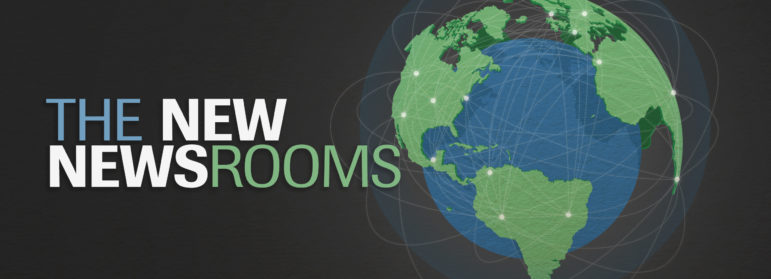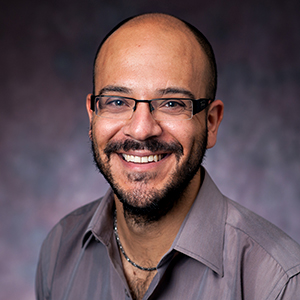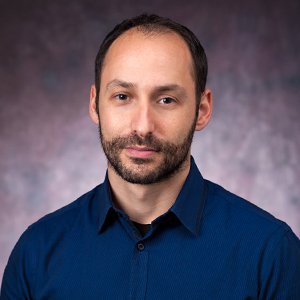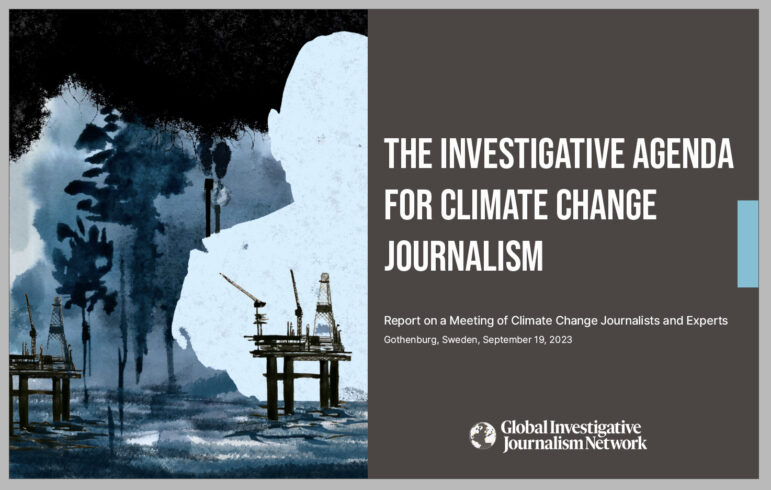

New Journalism Ecosystem Thrives Worldwide
 “In the immortal words of Sir Isaac Newton more than three centuries ago, ‘To every action there is always opposed an equal reaction.’” In October 2010, Executive Editor Charles Lewis wrote these words for the Investigative Reporting Workshop’s first New Journalism Ecosystem research on nonprofit news organizations in the United States. Those same words summarize the events that led to the launch of the Hungarian nonprofit center for investigative journalism, Direkt36, and many other similar centers around the world.
“In the immortal words of Sir Isaac Newton more than three centuries ago, ‘To every action there is always opposed an equal reaction.’” In October 2010, Executive Editor Charles Lewis wrote these words for the Investigative Reporting Workshop’s first New Journalism Ecosystem research on nonprofit news organizations in the United States. Those same words summarize the events that led to the launch of the Hungarian nonprofit center for investigative journalism, Direkt36, and many other similar centers around the world.
When, in early 2014, András Pethő started pursuing a story about the excessive travel expenses of a senior government official, he expected to face resistance from the government. What he did not foresee was the pressure from the management of his own outlet, Origo, to drop the story. Gergő Sáling, the organization’s top editor, backed his reporter and refused to bow to the management’s requests.

The staff of Direkt36, a nonprofit investigative center in Budapest.
The stalemate ended in June 2014, with the dismissal of Sáling. Pethő, who also served as deputy editor, resigned in protest, as did more than half the newsroom. The two journalists joined forces with Balázs Weyer, Origo’s co-founder who had left the outlet in 2011, and in January 2015 launched Direkt36.
“As a nonprofit organization, we will have greater freedom to do the kind of journalism we believe in,” said András Pethő in a recent Skype interview. “After what happened to us at Origo, which for a long time was one of the few truly independent news organizations [in Hungary], we thought that if we went to another news organization we would probably end up in the same situation really soon.”
As its founders explained when they launched the nonprofit, Direkt36 is “a small but effective special unit,” focused on corruption and abuse of power. One of its investigations, which spurred a police investigation, unveiled how Hungarian Prime Minister Victor Orban’s son-in-law’s business kept winning public contracts to improve street lighting in several cities, while offering overpriced lamps and facing scarce competition.
Direkt36 is another addition to a growing contingent of nonprofit centers for investigative reporting that emerged worldwide over the past 10 years. The reporters who founded these centers followed the example of their colleagues in the U.S., where this model has thrived for the past two decades.
In 2012, the Investigative Reporting Workshop’s iLab profiled 75 nonprofit journalistic organizations in the United States with $135 million in total funding and 1,300 full-time employees. A new analysis by the Workshop over the past year has found that the nonprofit model has taken root worldwide, although the numbers, in terms of employees and budgets, are not as big as they are in the United States.
Models and Methods
One person who has been following and assisting these centers to grow in the country and across the world is Global Investigative Journalism Network’s (GIJN) executive director, David E. Kaplan. In a phone interview a few weeks after the GIJN global conference in Norway, he said that even with financial and political challenges, this is an exciting moment in time for the field of independent investigative journalism.
“The field is exploding and there are a lot of exciting trends that are going on, a lot of great new tools to gather data, to analyze it, to visualize it. There were about 170 sessions at the global conference just concluded in Lillehammer and a third of those focused on data and online research in various ways. In many ways it is a golden era for investigative journalism, despite all the hard blows we have taken,” he said.
In the second edition of his research Global Investigative Journalism: Strategies for Support in 2013 Kaplan wrote that although investigative nonprofits differ in model, size, budget, goals and environment, three general models can be identified: professional associations and training centers, funding organizations and reporting organizations.
Professional associations and training centers offer resources, networking opportunities and shared knowledge. The Investigative Reporters & Editors (IRE) for example, is the largest and oldest association in the field of investigative journalism. It was formed in 1975, and today has around 5,500 members who benefit from its workshops and networking opportunities.
Similar organizations from around the world include Abraji, Brazil’s association of investigative journalists, which has more than 3,000 members. FUJ, the Danish Association of Investigative Journalism and Nigeria’s Wole Soyinka Centre for Investigative Journalism.
Funding or grant-making organizations will usually provide journalists with money to peruse investigative projects, with amounts ranging form a few hundred dollars to several thousand. One example for such organization is the Fund for Investigative Journalism, which has helped hundreds of stories come to light.
The third group, reporting organizations and agencies, are the ones this analysis is focusing on. Such nonprofits run their own investigations independently or collaborate with another news outlet. Examples in the United States include The Center for Investigating Reporting, The Center for Public Integrity, ProPublica, The Texas Tribune and the Investigative Reporting Workshop.
Since we are tracking a dynamic ecosystem, we know that this ambitious report is imperfect and not complete. In some cases, linguistic problems limited the analysis. In other cases required a judgment call. Our 2010 and 2012 reports focused on U.S.-based nonprofit news organizations, and this report is intended as an evolving resource, continually updated on the Investigative Reporting Workshop’s iLab site.
This international research draws information from several key sources. Among them, a detailed questionnaire by the IRW sent to and completed by organizations worldwide; several Center for International Media Assistance (CIMA) surveys; the Global Investigative Journalism Network website; and a broad literature on the issue in English and Spanish.
The Workshop analyzed the websites of more than 70 organizations based outside the United States. When an English or Spanish version of the website was not available, we used online translation services. We asked the selected organizations to respond to a detailed survey. In a few cases, we were not able to figure out if an organization had the characteristics we were looking for. When this happened, we emailed them the survey to make sure we were not overlooking any organization.
For each organization, we have attempted to identify who the founder(s) and the executive editor are; when the venture was launched; the number of full-time staff, full-time personnel on the editorial team and those with prior professional journalism experience; the degree of transparency; and professional peer recognition in the form of awards for what has been published. We also asked them if they had interns or fellows, were affiliated with a university and on what issues they focus.
We sent at least one follow-up email, and in many cases up to four, to those that did not respond the first time. With the help of interns and students who speak Spanish, Italian, French, Russian and Georgian, we tried to call at least once the organizations for which we were able to find a telephone number. Of the 110 organizations analyzed, 71 organizations were sent the survey; 37 organizations, or 52 percent, responded and 27 are included in the final list.
The reasons why some of the respondents did not make it to the final list vary. Venezuela-based ArmandoInfo, for example, was launched in 2014 as a nonprofit, but then switched to the for-profit model. Italy-based Dataninja.it and the Icelandic Center for Investigative Journalism were not included in our final list either: The former did not respond most of the questions; the latter is focused on networking and training.
On the contrary, the Arab Reporters for Investigative Journalism (ARIJ) was included despite its peculiar model: As they wrote in the survey, “We operate as a for-profit due to the difficult laws and regulations dealing with foreign funding, but the owners of the company have signed a paper that no one takes any profit so effectively it is running as a non for profit.”
Not all organizations responded to all questions. All but two provided budget information.
Findings
The financial information we found emphasizes the difference between the U.S. based nonprofits and the rest of the world. The leading five organizations’ budgets in our research are:
It is interesting to note that the cumulative total of the annual budgets of these organizations is just more than $6 million. As a comparison, in 2013 U.S.-based ProPublica had a budget of about $10 million.
The 27 nonprofits in this analysis have 213 full-time employees; 156 of them or 73 percent, participate in the editorial work of their organizations. And yet, most of the centers tend to be small operations: Only eight of them have 10 or more full-time employees; seven centers have a staff with five or fewer full-time employees; four have no full-time staff.
Although these organizations are mushrooming worldwide, Europe and Latin America are the hotbeds of the new ecosystem. Of the 27 organizations we focused on, eight are based in Latin America and 14 in Europe. South Africa, where enterprise reporting has deep and strong roots, also offers fertile ground for investigative nonprofits. Two of the award-winning organizations we surveyed are based there: the Oxpeckers Center for Investigative Environmental Journalism and M&G Centre for Investigative Journalism.
Women lead one in three organizations, including two of the five centers with the biggest budgets: Rachel Oldroyd at the Bureau of Investigative Journalism and Rana Sabbagh at Arab Reporters for Investigative Journalism. Disaggregating this figure by region, Latin America ranks first for the number of female executive directors: Four out of eight organizations surveyed in this region have women at the helm. The figures plunge in Europe, where women lead only two of the 14 organizations in the list. Women also lead two organizations in Africa and one in Armenia.
“I can remember approaching publications 15, 20 years ago and people not wanting to work with us because they didn’t believe in independent nonprofits as sources of accurate dependable reporting,” said GIJN’s Kaplan on the reputation of nonprofit muckrakers. “That’s all changed now.”
Kaplan’s observation matches our analysis. While 20 centers, 74 percent of those surveyed, have been launched over the past five years, we found that 21 of the 27 have won awards for their reporting.
Nils Mulvad, the co-founder of the Danish nonprofit news center, Investigative Reporting Denmark, wrote in the 2013 Nieman Foundation’s Muckraking Goes Global that investigative reporting centers “have great flexibility compared to classic media organizations as well as the vision to develop innovative approaches to journalistic research, publication methods, and diverse funding models.” With that in mind, we found that investigative nonprofits also help to train future journalists. Half of the organizations, 14 out of 27, regularly have interns and five centers have an affiliation to a university.
Germany-based Correct!v, for example, has offered 12 data-driven journalism fellowships in 2015 and an equal number of internships. Three centers, Consejo de Redaccion, Plaza Publica and the Bureau of Investigative Journalism, are fully affiliated with a university, which hosts their offices. Partnerships between nonprofit centers and the academic worlds can take different forms. The Organized Crime and Corruption Reporting Project works with the Swedish School of Economics in Riga, where some members of the staff are faculty, to develop and carry out training activities. ARIJ has developed a curriculum to teach a three-hour credit course on investigative journalism in several Arab universities. In 2013, the School of Journalism at the University of the Witwatersrand, Johannesburg, South Africa, funded two fellowships at Oxpeckers Center for Investigative Environmental Journalism.
Problem: Sustainability
The key question around which this ecosystem revolves is the sustainability of these endeavors. Most of the organizations surveyed heavily rely on grants from foundations and governments, with American and European private and public donors providing the bulk of the grants.
Despite the leading role muckrakers play in strengthening democratic systems, rising journalism standards and fighting corruption and abuses all over the world, funding investigative journalism doesn’t seem to be a top priority for donors.
“How do all these groups support themselves? I think you have to differentiate the markets,” Kaplan said. “In the U.S., which probably has half of these groups, you also have the largest philanthropic market. It is the largest philanthropic community in the world by far and we also have tax laws, we have an economic incentive structure that encourages nonprofits. So this is the only place I know of where taxpayers get 100 percent tax deduction for donating to charitable and educational organization.”
He also said that nonprofits based in developing and transitioning countries often have to rely on international aid because there is no willingness or tradition to support them in their home countries. And while Kaplan said he can see improvement in how international development agencies regard investigative journalism as part of the overall development plan in a country, when it comes to seeing an impact, donors can still be impatient with results.
“To some degree, you have to look at investing in investigative reporting much as you do investing in a school or training,” he said. “We’re sowing seeds. We‘re growing expertise around the world. And you not going to see the payoff sometimes for years.”
It is hard to come up with a precise figure of how much support investigative journalism centers receive, mostly due to the number and diverse nature of donors and funders on the one side and projects and organizations funded on the other side.
Yet, in the Global Investigative Journalism: Strategies for Support report it is estimated that investigative journalism only receives 2 percent of the overall amount given from major donors to international media development, which was about $500 million in 2010. That same report found that the United States is the largest national source of funding in this field.
That is why the findings of a 2013 CIMA report on the U.S. government’s strategies to support media development worldwide are worrisome. According to the report, based on figures from the Department of State and USAID, U.S. government support for international media declined by 43.5 percent between 2008 and 2013, plunging to $76.3 million, from $135 million, although Kaplan notes that most of the cuts affected Iraq and Afghanistan. These numbers do not include private donors.
With a growing number of organizations competing for the same, scarce resources, many investigative centers have worked to diversify their revenue stream. The solutions include offering services to mainstream media, developing training activities for journalists, selling stories to mainstream outlets, crowdfunding campaigns, advertising and subscriptions. Yet, in most cases, this revenue only accounts for a small percentage of the budget.
Investigative centers face yet another problem, many nonprofits face in many countries: Getting access to international funding has become much harder over the past decade, due to a crackdown on nonprofit organizations, part a wider attempt to restraint the civil society.
As Douglas Rutzen, president of the International Center for Not-For-Profit Law (ICNL), wrote for theJournal of Democracy, if nonprofit muckrakers go global, Authoritarianism Goes Global too. The Golden Age of civil society organizations (CSOs), spurred by the fall of the Berlin Wall and the explosion of the Internet, started downing with the 9/11 terrorist attack. While Western countries increasingly focused on security and anti-terrorism affecting certain nonprofits, the “color” revolutions in Eastern Europe and the Arab Spring in North Africa led countries like Zimbabwe and Belarus to enact laws restricting freedom of association and limiting CSOs.
According to Rutzen, between 2004 and 2010 more than 50 countries worldwide discussed or enforced measures restricting civil society. “Since 2012,” wrote Rutzen, “more than 120 laws constraining the freedoms of association or assembly have been proposed or enacted in 60 countries.”
Restrictions on international funding make up more than one third of all restraining measures. Russia, Nepal, Sri Lanka and Egypt are just a few examples of countries that enacted such restrictions.
“A 2013 UNSR report,” reads Rutzen’s article, “notes that governments frequently justify constraints with a rhetorically appealing term such as ‘sovereignty,’ ‘counterterrorism,’ or ‘accountability and transparency,’ which upon inspection proves to be merely ‘a pretext to constrain dissenting views or independent civil society’ in violation of international law.”
Transparency
This situation poses an important ethical issue. As Anya Schiffrin, the director of the International Media, Advocacy and Communications specialization at Columbia University’s School of International Affairs and the editor of the book Global Muckraking – 100 Years of Investigative Journalism From Around the World said in an interview with the Workshop in May 2015, “For nonprofit news organizations, funding from philanthropists, foundations, governments and corporations is inevitable. The real question is not whether or not they should get money from these subjects, but what kind of relations they have with donors. Transparency and disclosure are key factors in this case.”
Transparency is a particularly important criterion in looking at journalistic organizations. We asked each organization if it publicly discloses on its website the source of funding, major donors, salaries and editorial, ethical and diversity statements. We were encouraged to find that 22 organizations named their major donors on their websites. (In some countries, publicly naming your donors could expose them to harassment, threats, and even prosecution. That’s why GIJN has not adopted a strict policy calling for public disclosure of funding sources.)
But only 16 organizations post how much financial support they actually received. More than half of the organizations have ethics and/or editorial policies posted, and four have a diversity statement. Only two organizations publicly disclose their salaries: Spanish Fundacion Ciudadana Civio and German Correct!v.
The nonprofit model is a viable option whether in Europe, Latin America, South Africa and India. The new journalism ecosystem is taking hold worldwide, evolving to deal with the specific conditions and problems it faces in each country. It is still fragile, and economic, legal and professional challenges lie ahead. Yet, there is room for optimism.
“There is always some insecurity in this model,” said Hungary’s Andres Pethő of Direkt36. “But I think if our stories are good, we are good.”
Amber Liu contributed to this report. This article is part of The New Newsrooms, a series on investigative journalism nonprofits by the Investigative Reporting Workshop at American University.

Pietro Lombardi served as the Investigative Reporting Workshop’s Graduate Fellow in 2014-2015. He has worked for six years in journalism and communications for several Italian media outlets. His investigation into environmental crimes in Italy’s Naples and Campania regions received a special mention at the 5th International Prize of Journalism “Maria Grazia Cutuli” in 2009.

Daniel Farber-Ball is a graduate researcher at the Investigative Reporting Workshop. He is an experienced international news producer and a master’s candidate at AU’s International Media program. He has produced videos from the Middle East and Africa for several international news outlets, reporting from conflict zones and managing live studio guests from different countries.









